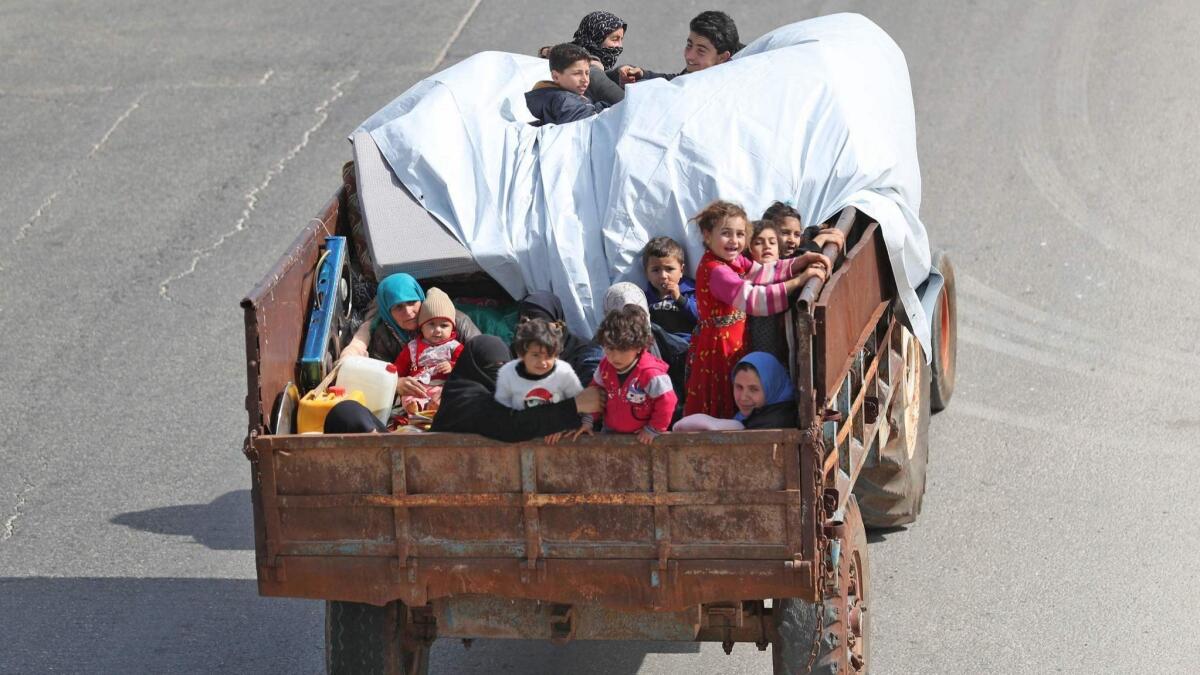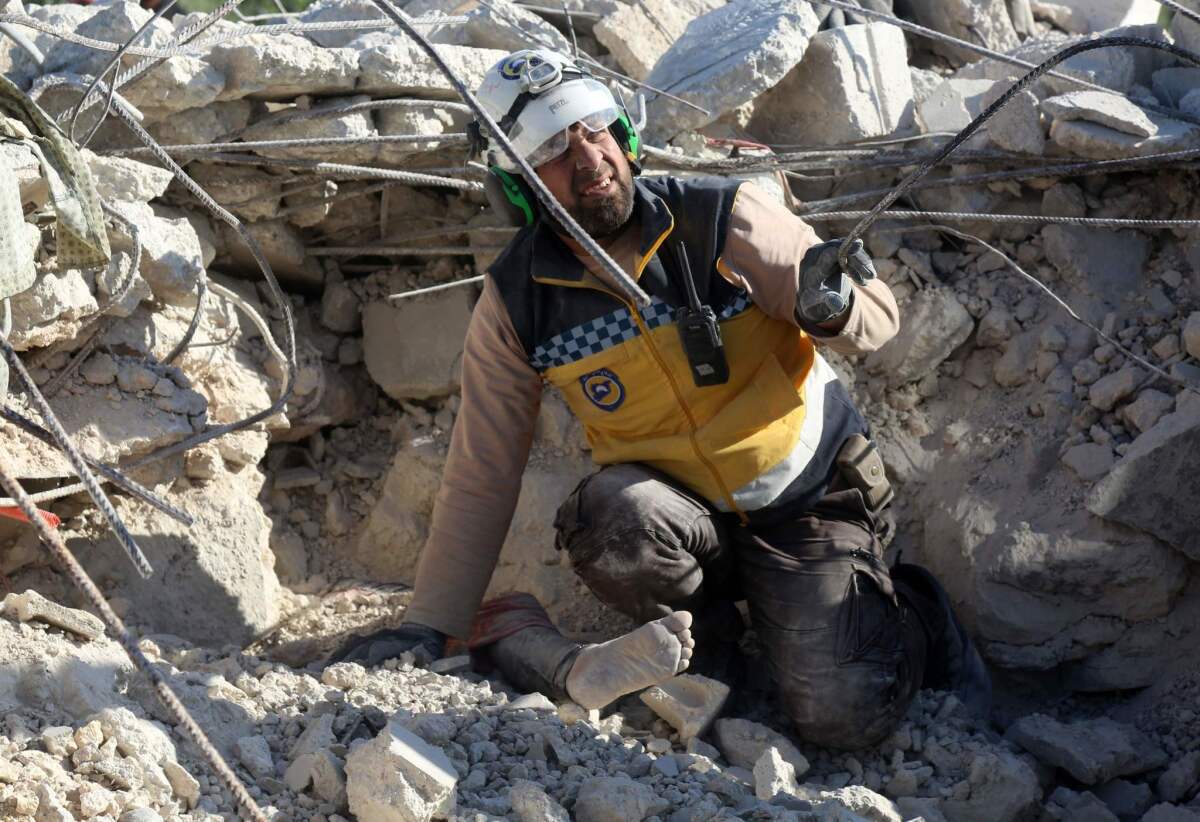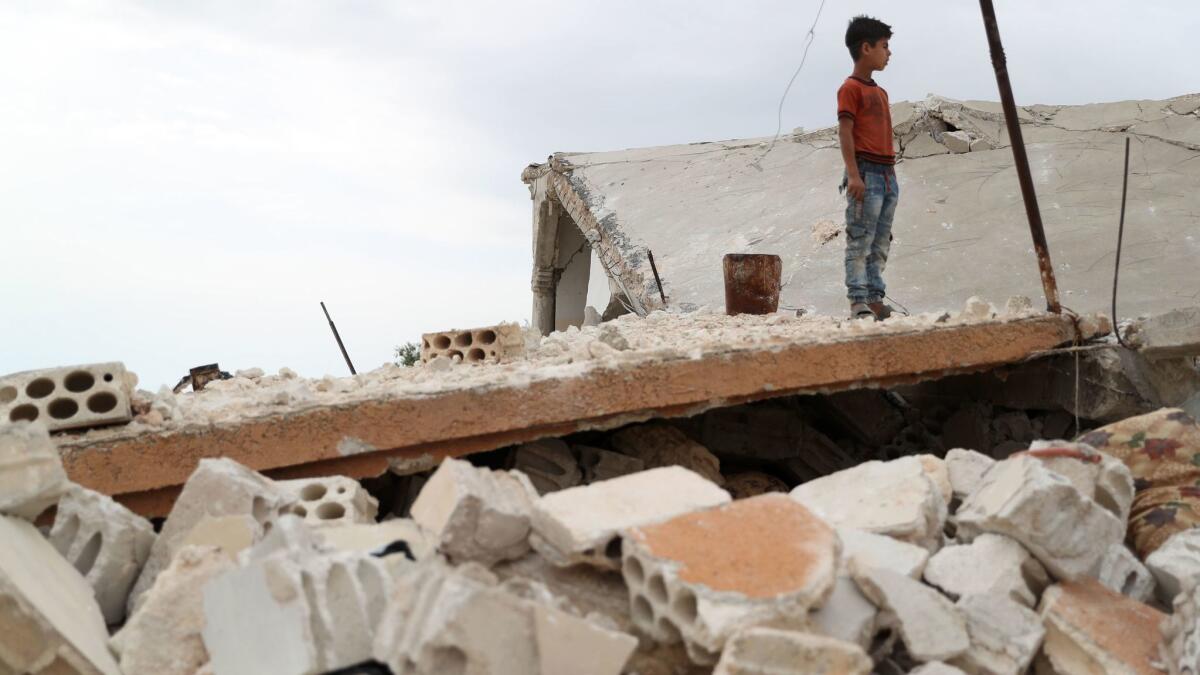Syrian government troops launch an offensive against rebels in the country’s northwest

- Share via
Reporting from Amman, Jordan — Syrian troops stormed rebel-held areas of the country’s northwest on Monday, state media, monitors and activists said, marking the government’s latest bid to reassert control over the opposition’s last major territory.
The ground incursion came in the wake of a fierce weeklong air campaign, with Syrian and Russian warplanes executing dozens of daily strikes on rebel-controlled territories in the northwestern provinces of Hama and Idlib.
The escalation dashed a Russian-Turkish truce brokered in September that had stayed a massive government offensive on Idlib, which is home to Syrian President Bashar Assad’s most implacable rebel adversaries.
Syrian army units, including the elite Tiger forces, charged Monday morning into the northern countryside of Hama province. Hours later, they cut rebel lines to snatch the village of Banah as well as the strategic Othman Hill, before surrounding Kafr Nabouda, according to state-aligned news channels, including the Central Combat Media and Lebanese broadcaster Al-Mayadeen.
The operation, the state-run Syrian Arab News Agency said, was a response to the “terrorists’ continuous attacks” on government areas.

The Syrian Observatory for Human Rights, a pro-opposition monitor, confirmed the army’s advance and said Monday’s violence had killed 31 people, including five civilians.
Capt. Naji Mustafa, spokesman for the rebels’ National Liberation Front, acknowledged the government had taken territory, but, he said, “the fighting is ongoing, it’s a hit-and-run battle.” He accused the government of using scorched-earth tactics against civilian areas.
Meanwhile, activists and residents said, thousands of people had fled their homes, heading to the relative safety of open fields to escape round-the-clock airstrikes.
They posted images of what they said were families unloading their few salvaged belongings from trucks hidden among orchards.
Others reported three major hospitals serving rebel areas had been destroyed in the barrage. The Syrian Observatory for Human Rights said Monday that 120 people had been killed in the province since April 30.

Last week, the U.S. said Russia must halt the escalation in Idlib. “The violence must end,” State Department spokeswoman Morgan Ortagus said in a statement.
In September, Assad’s allies Russia and Iran, and Turkey, the opposition’s main backer, announced a cease-fire regime that designated parts of Idlib and Hama as a demilitarized zone.
The agreement required rebels to abandon their heavy weaponry and Al Qaeda-affiliated militants and other extremists to leave the province.
Analysis: Pullout from Syria weakens U.S. hand in the Middle East and boosts Russia »
The truce aimed to form the first step toward a more comprehensive peace aimed at ending the eight-year Syrian civil war, a conflict that has killed an estimated 370,000, displaced millions and reduced wide swaths of the country to smoldering ruins.
Yet the agreement was stillborn. The extremists are not only the dominant force in Idlib but are also some of Assad’s toughest opponents; other rebel factions, including those backed by Turkey and Western countries, did not move to dislodge them.
Meanwhile, the fighting between the rebels and the government, though reduced, continued with both sides accusing the other of cease-fire violations
Students in Syria are a textbook case for post-Islamic State reeducation »
Though the scope of the army operation was unclear, the first phase aimed to oust the rebels from Hama and a line some 12 miles into Idlib’s territory, said Simon Wakeel, commander of a volunteer group of pro-government fighters stationed in northern Hama.
But even a limited offensive would spur a flood of refugees. In April, Panos Moumtzis, the United Nations’ humanitarian coordinator for Syria, said in a statement 120,000 of Idlib’s residents had been displaced since February.
More to Read
Sign up for Essential California
The most important California stories and recommendations in your inbox every morning.
You may occasionally receive promotional content from the Los Angeles Times.











